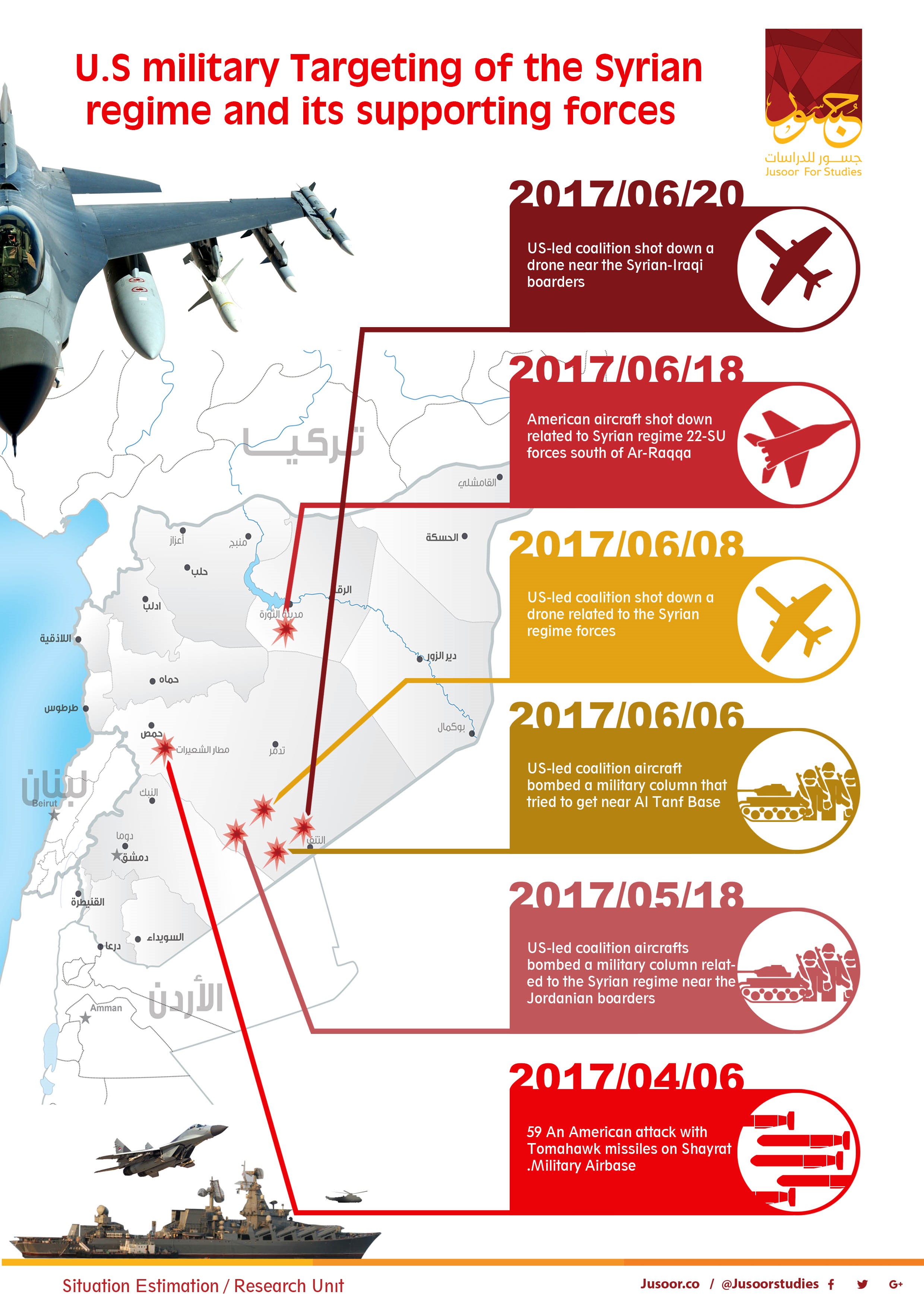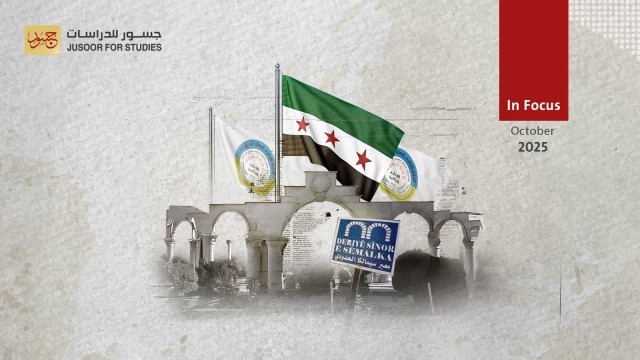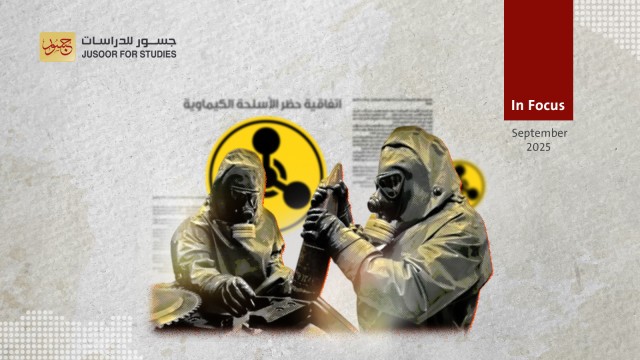Aircraft Battles in Syria
Preface
For the first time since the beginning of the Syrian crisis, six years ago, the US has shot down a Syrian regime aircraft near Ar-Raqqa.
This was the fifth time Regime forces were targeted in less than two months, marking a dramatic evolution in the US strategy towards Syria. This, of course, raises alarm bells for the Regime’s main allies, Russia and Iran, and shows an unprecedented firmness in American policy towards Syria.
The targeting of the regime's aircraft represents a turning point in the relations between the two sides, as neither the opposition forces, the Free Syrian Army (FSA) and the Syrian Democratic Forces (SDF), nor ISIS, were able to target military aircraft, except on a few rare occasions. Their operations were limited to targeting ground forces and even spy planes. They certainly did not have the capacity to shoot down military aircraft.
This dramatic shift in American policy changes the legal definition of the coalition’s objectives in Syria, from its previous definition of fighting a terrorist organization responsible for targeting its own citizens, whereby that country is unable to fight these terrorists on its own. According to international law this could turn the conflict in Syria into an international conflict, propelling Russia to redefine its relationship with the US regarding Syria, and renegotiate terms of control in the area.
Washington, too, would be willing to partake in these negotiations, in order to take advantage of new interests and gains in the area, freeing itself from previous agreements, and focusing on its new priorities.
Besides Russia, the targeting of Regime aircraft sends a message to many other parties, notably Iran, the Syrian Regime and the SDF.
This report seeks to analyze these messages along with the possible implications this incident may have and the chances of it occurring again in the future
Chain of US strikes against Syrian Regime
On 6/4/2017, two US warships (in the Mediterranean) launched 59 tomahawk missiles, targeting Shayrat Airbase near Homs in response to the chemical attack on Khan Shaykhun, where hundreds of civilians were killed. It was the first time that the White House gives direct military orders against the Syrian regime.
Pentagon officials declared that a US-led coalition bombarded a convoy of Shiite militias working with the Syrian regime, as it was heading to a military post near the Jordanian boarders, on 18/5/2017.
Iranian-backed militias tried to enter a supposed no-go zone near a U.S garrison in southern Syria (Al Tanf base), with a force of about 60 fighters armed with tanks and anti-aircraft weapons. They entered an exclusion zone around the al Tanf base, where American Special Operations Forces train Syrian rebels. Before unleashing their bombs, American military officials gave warnings through their Russian counterparts who are allied with the Iranian-backed force. But when the convoy refused to leave, the Americans struck, on 6/6/2017.
The US-led coalition shot down Syrian regime unmanned aerial vehicle after attacking forces (with no damages) belonging to the coalition, on 8/6/2017.
U.S fighter jet shot down Syrian regime Sokhui SU-22 aircraft north of Raqqa, on the 18/6/2017.

Aircraft Shooting Down
The US-led coalition stated that, at 18:43 pm an aircraft belonging to the regime targeted SDF sites south of Raqqa, which obliged U.S fighter jets to shoot it down on the 18/6/2017. However, the Syrian regime claimed that, the aircraft was targeting areas controlled by ISIS in Raqqa .
The shooting down of the aircraft raised the tension between Russia and the US , where Moscow considered this action a violation of international law and a hostile act. Moreover, Russian foreign minister declared that, his country will respond by suspending all channels of communication and coordination with the US in Syria .
The tension increased after a NATO fighter jet came near the plane of the Russian Defense Minister. However, the fighter jet withdrew after being chased by Russian aircraft. The US blamed Russia for the incident but Russia claimed it was provoked by a US spy plane. .
The Syrian Regime's media covered the incident in a timid way, only including its response within the Russian ones.
Messages and Connotations
Since the arrival of Donald Trump to the presidency, American forces have, followed a more confrontational approach and have not hesitated in sending political messages and delineating the boarders of influence through the direct targeting of other actors in addition to ISIS.
The targeting of the SDF by the Syrian regime, was aimed at testing the boundaries of the conflict and the alliance conditions between the US and the Kurdish militias, as part of attempt to gain a quota from the Raqqa Battle. It was also aimed at restarting the negotiations for influence in the eastern region.
The shooting down of the Syrian Aircraft also conveyed message from the US to all sides that it will not hesitate to take any measures to prevent any party from interfering in its controlled zones.
The American response reassured its partners in the battlefield, who suffered for too long from aerial bombardments. It was notable that the US action towards the Syrian aircraft was due to the importance of the Raqqa Battle rather than SDF itself. Knowing that, the SDF areas witnessed similar Turkish shelling on the 25/4/2017 with no American response, even though it happened near a US military base. This provides clear evidence of US interest in the region itself more than the SDF.
The US strike showed an absence of any American-Russian agreement about dividing the influence in the eastern region.
The US strike (which occurred during the Russian defense minister’s visit to Khmeimim Airbase) increased Russia’s dissatisfaction with America. Trump expanded the scale of the battle and US influence with no prior coordination with Russia, who thought that it was able specify the size of US influence along with its expansion east and south of Syria.
Despite the tension in Syria, American-Russian "good policy" will prevent any direct conflict (keeping it in the stage of "The biting of fingers / who- screams-first" game), at which, targeting any allied party (SDF or Syrian regime forces) won't lead to any major threat for the US or Russia.
The Russian side shows a desire of testing (continuously) the American administration through limited maneuvers represented by having a vast area in Syria, which includes: Damascus Governorate (without its eastern rural) – Homs and Aleppo governorates (without their north, west and east rural) – the Syrian coast, as a contiguous area whilst US desires of having: the eastern regions – Damascus eastern rural – Aleppo and Idlib rural.
An anticipated conflict between the two superpowers to take place will be over the division of influence in: Daraa – As-Suwayda – Deir ez-Zor – Ar-Raqqa. This conflict will delay resolving the thorny issues like: safe zones – de-escalation zones – the future of southern regions along with Raqqa and Deir ez-Zor – future of Kurds after defeating ISIS in Raqqa.
Margins:
1- US shoots down Syrian government fighter jet that dropped bombs near coalition-backed forces fighting Isis, The independent, 18/6/2017
2- Russia warns US its fighter jets are now potential target in Syria, The guardian, 19/6/2017
3-Russia warns US its fighter jets are now potential target in Syria, The guardian, 19/6/2017
4-Russian defense minister's plane buzzed by NATO jet over Baltic, Reuters, 21/6/2017








